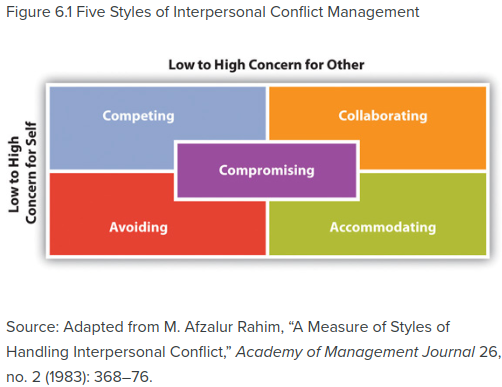Conflict Management Styles: Difference between revisions
Jump to navigation
Jump to search
No edit summary |
No edit summary |
||
| Line 3: | Line 3: | ||
[[File:5styles.png]] | [[File:5styles.png]] | ||
**Mentions awareness of instrumental, relational, and self-presentation goals in negotiation | **Mentions awareness of instrumental, relational, and self-presentation goals in negotiation | ||
*Demand-withdrawal pattern - [https://www.ncbi.nlm.nih.gov/pmc/articles/PMC3218801/#:~:text=Demand%2Dwithdraw%20occurs%20in%20one,avoid%20discussion%20of%20the%20issue.] | *Demand-withdrawal pattern - [https://www.ncbi.nlm.nih.gov/pmc/articles/PMC3218801/#:~:text=Demand%2Dwithdraw%20occurs%20in%20one,avoid%20discussion%20of%20the%20issue.] - ranks among the most destructive and least effective interaction patterns | ||
=Communication in the Real World= | =Communication in the Real World= | ||
*OER text book - [https://open.lib.umn.edu/communication/] | *OER text book - [https://open.lib.umn.edu/communication/] | ||
Revision as of 05:16, 29 October 2020
- Five styles of interpersonal conflict management [1]
- Mentions awareness of instrumental, relational, and self-presentation goals in negotiation
- Demand-withdrawal pattern - [2] - ranks among the most destructive and least effective interaction patterns
Communication in the Real World
- OER text book - [3]
